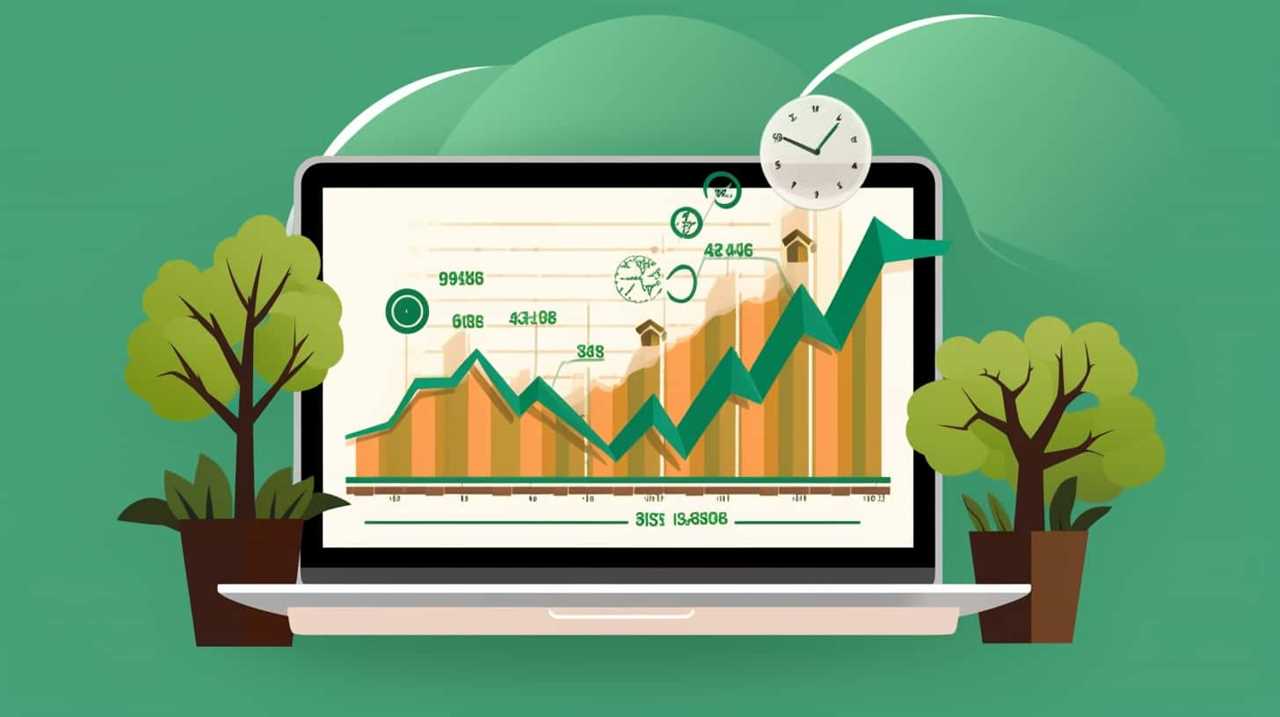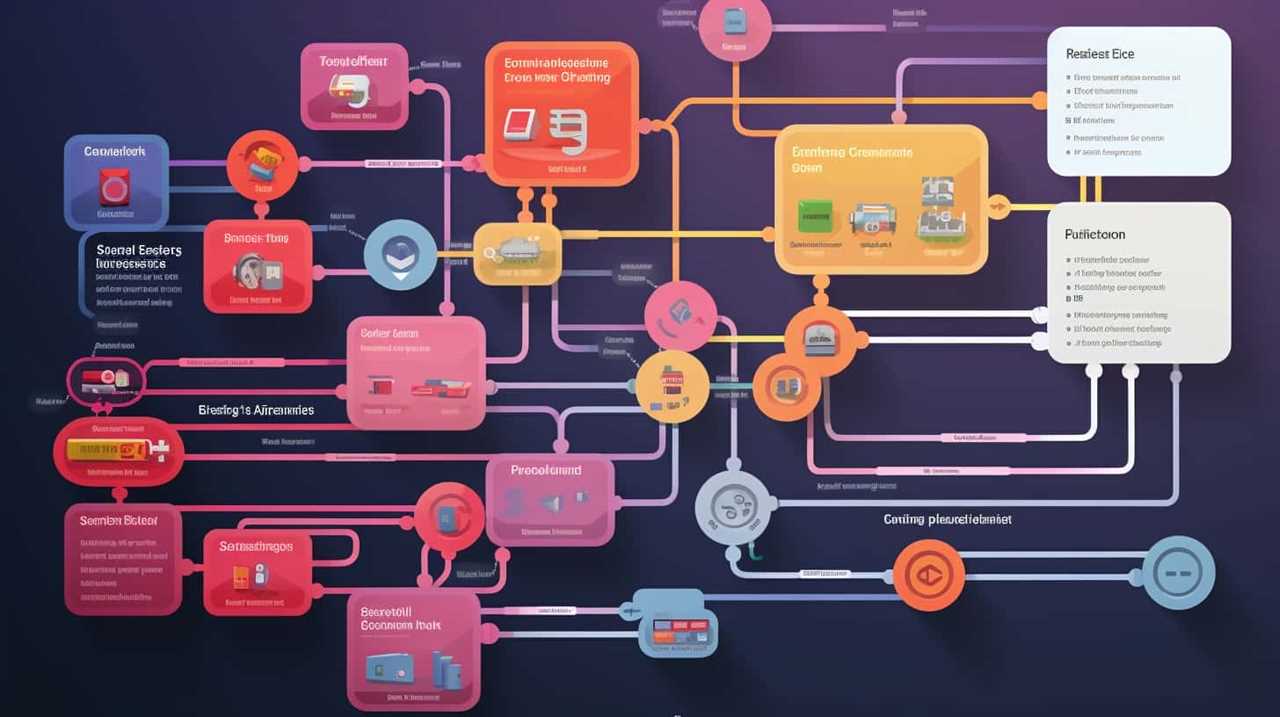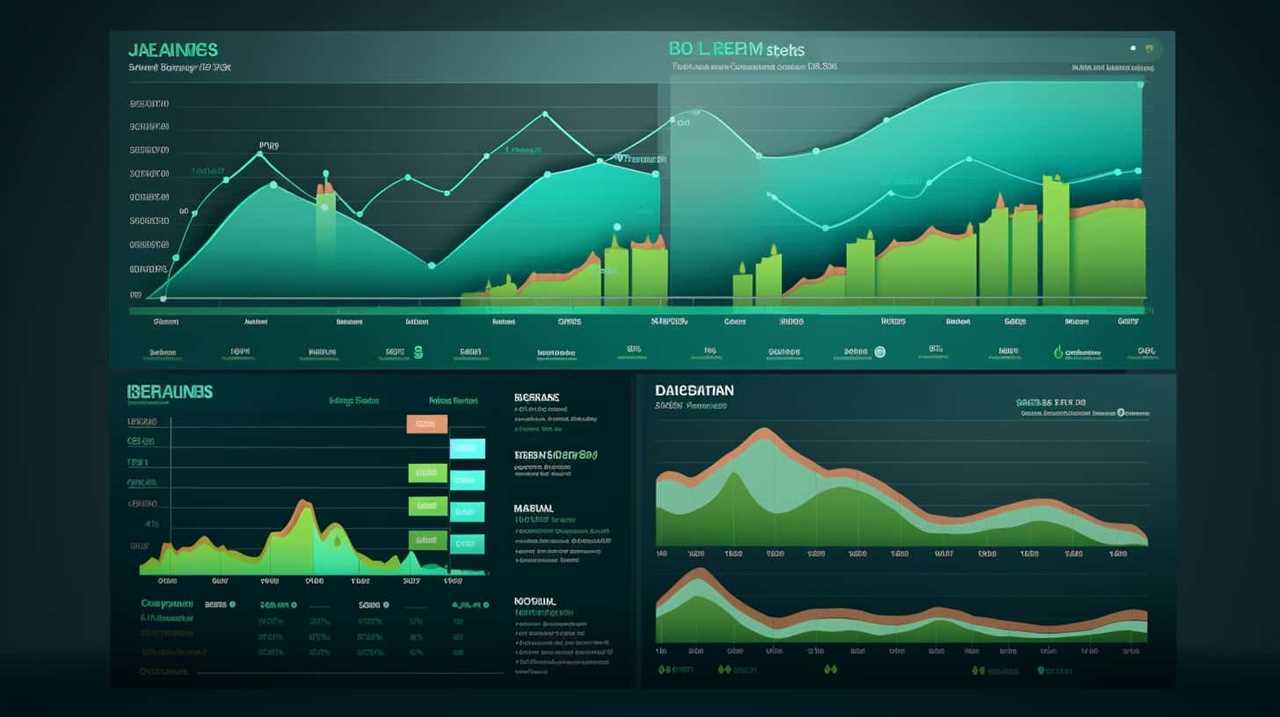As a practitioner of herbalism or naturopathy, I recognize the significance of targeting the appropriate audience with the correct message. For this reason, I chose to implement Google Ads for my enterprise.
With its targeted approach and cost-effective strategies, Google Ads has helped me maximize my budget and connect with those who are seeking natural remedies.
In this article, I’ll share the benefits, tips, and best practices to create successful Google Ads campaigns for herbalists and naturopaths.
Let’s harness the power of digital marketing and achieve herbal harmony together.

Key Takeaways
- Google Ads can help herbalists and naturopaths target specific audiences based on search queries and use targeting techniques like keywords and location settings.
- By analyzing ad performance, herbalists and naturopaths can gain valuable insights and increase brand awareness and website traffic.
- Utilizing demographic targeting options and narrowing down the audience based on age, location, and interests can help herbalists and naturopaths effectively target their ideal audience.
- Crafting compelling ad copy, conducting ad copy testing, and paying attention to language, tone, and formatting preferences can increase click-through rates and drive more conversions.
The Benefits of Google Ads for Herbalists
One of the key benefits of utilizing Google Ads for herbalists is the ability to target a specific audience based on their search queries. This means that when someone searches for terms related to herbal remedies or naturopathy, your ads can appear directly in front of them. By using targeting techniques such as keywords and location settings, you can ensure that your ads are reaching the right people at the right time.
But it doesn’t stop there. Google Ads also allows you to analyze the performance of your ads, giving you valuable insights into how well they’re performing. With ad performance analysis, you can see which keywords are driving the most clicks and conversions, allowing you to optimize your campaigns for maximum effectiveness.
Targeting your ideal audience with Google Ads is crucial for herbalists and naturopaths. By reaching the right people with your ads, you can increase brand awareness, drive more traffic to your website, and ultimately attract more customers.
In the next section, we’ll explore some strategies for effectively targeting your ideal audience with Google Ads.

Targeting Your Ideal Audience With Google Ads
When it comes to running successful Google Ads campaigns, targeting your ideal audience is crucial. There are several demographic targeting options available that allow you to narrow down your audience based on factors like age, location, and interests.
By using effective ad copy that speaks directly to your target audience’s needs and desires, you can increase the chances of them clicking on your ads and converting into customers.
Additionally, optimizing your ad budget will ensure that you’re getting the most out of your advertising dollars by focusing on the audience segments that are most likely to generate results.
Demographic Targeting Options
To effectively target your ideal audience with Google Ads, utilize the various demographic targeting options available. Age targeting options allow you to narrow down your audience based on specific age groups, ensuring that your ads reach individuals who are most likely to be interested in your herbalist or naturopath services.

For example, if you specialize in remedies for older adults, you can set your ads to target individuals aged 50 and above.
Location targeting options, on the other hand, enable you to focus your ads on specific geographic areas. This is especially useful for herbalists and naturopaths who have a physical practice or offer local services. By narrowing down your audience to individuals in your area, you can increase the likelihood of attracting potential clients who are nearby and ready to seek your expertise.
Now that we’ve discussed demographic targeting options, let’s move on to the next crucial aspect of creating successful Google Ads: effective ad copy.
Effective Ad Copy
Now, let’s delve into the key aspect of creating successful Google Ads: crafting compelling ad copy that effectively targets your ideal audience.

Ad copy optimization is crucial in capturing the attention of potential customers and enticing them to click on your ad. To achieve this, it’s essential to conduct ad copy testing to determine which messages resonate the most with your audience.
By testing different headlines, descriptions, and calls-to-action, you can refine your ad copy and maximize its impact. Pay attention to the language, tone, and formatting that align with your target audience’s preferences.
Remember, the goal is to create ad copy that speaks directly to your ideal customers and compels them to take action. With optimized ad copy, you can increase your click-through rates and ultimately drive more conversions.
Now, let’s move on to the next important aspect of Google Ads: ad budget optimization.

Ad Budget Optimization
Optimizing your ad budget is crucial for targeting your ideal audience with Google Ads. Effective ad budget management and bidding strategies can significantly enhance the performance of your herbalist or naturopathic practice. By allocating your resources strategically, you can maximize the impact of your advertisements and reach the right people at the right time.
To help you understand the importance of ad budget optimization, let’s take a look at the following table:
| Ad Budget Management Strategies | Benefits | Challenges |
|---|---|---|
| Setting clear objectives | Helps prioritize spending on high-value keywords and target audience | Requires thorough research and analysis |
| Monitoring ad performance | Allows for real-time adjustments to optimize budget allocation | Requires ongoing attention and analysis |
| Utilizing bid adjustments | Enables targeting specific demographics or locations for better ROI | Requires constant monitoring and adjustment |
By implementing these ad budget management strategies, you can ensure that your Google Ads are reaching your ideal audience effectively and efficiently. Crafting compelling ad copy for herbalists will further enhance your campaign’s success by capturing the attention and interest of potential clients.
Now let’s delve into the art of crafting captivating ad copy for herbalists.

Crafting Compelling Ad Copy for Herbalists
Creating persuasive ad copy is essential for herbalists to attract potential customers and drive conversions. To craft compelling ad copy that resonates with your target audience, consider the following strategies:
- Craft attention-grabbing ad headlines: Start with a captivating headline that immediately captures the reader’s attention. Use powerful words that evoke curiosity, highlight benefits, or address pain points. For example, ‘Discover the Natural Healing Power of Herbal Medicine’ or ‘Transform Your Health with Herbal Remedies.’
- Optimize ad visuals: Visuals play a crucial role in capturing the audience’s attention and conveying your message effectively. Use high-quality images that showcase the beauty of nature, the healing properties of herbs, or before-and-after transformations. Ensure that your visuals align with your brand and resonate with your target audience.
- Highlight unique selling propositions: Differentiate yourself from competitors by showcasing your unique selling propositions. Whether it’s your expertise in a specific type of herbal medicine, personalized consultations, or exclusive herbal blends, emphasize what sets you apart and why customers should choose you.
- Include social proof: People trust recommendations from others. Incorporate testimonials, reviews, or case studies that demonstrate the positive impact your herbal remedies have had on previous customers. This will build trust and credibility, increasing the likelihood of conversions.
Crafting compelling ad copy requires creativity, a deep understanding of your target audience, and a focus on highlighting the benefits and unique aspects of your herbal practice. By incorporating these strategies, you can create ads that resonate with potential customers and drive conversions.
Maximizing Your Budget With Google Ads
When it comes to maximizing your budget with Google Ads, there are a few key strategies to keep in mind.
First, targeting specific keywords is essential for reaching your desired audience. By focusing on relevant and specific keywords, you can ensure that your ads are being shown to the right people at the right time.

Additionally, ad scheduling is another important factor to consider. By strategically scheduling your ads to run during peak times or when your target audience is most likely to be online, you can make the most of your budget and increase the chances of reaching potential customers.
Targeting Specific Keywords
To effectively maximize my budget with Google Ads, I’ll focus on targeting specific keywords that align with the interests and needs of herbalists and naturopaths.
By using long tail keywords, I can capture a more specific audience and increase the chances of conversion. For example, instead of just targeting ‘herbal remedies,’ I can use long tail keywords like ‘natural remedies for sleep’ or ‘herbal remedies for anxiety.’
This won’t only help me reach a more targeted audience but also reduce competition and potentially lower my cost per click.

Additionally, negative keyword targeting is crucial to ensure that my ads aren’t shown to irrelevant searches. By excluding certain keywords like ‘synthetic’ or ‘chemical,’ I can further refine my targeting and ensure that my ads are reaching the right audience.
With these strategies in place, I can effectively maximize my budget and attract the right customers to my herbal and naturopathic practice.
Ad Scheduling Strategies
I strategically schedule my Google Ads to maximize my budget and reach my target audience effectively. Ad scheduling is a crucial aspect of any successful online advertising campaign. By carefully selecting the days and times when your ads are shown, you can ensure that you’re targeting your audience when they’re most likely to engage with your ads. This not only helps improve your ad placement but also allows you to allocate your budget more efficiently.
One effective strategy is to analyze your campaign data to identify peak times when your ads receive the most clicks and conversions. By focusing your ad scheduling during these times, you can increase the chances of reaching potential customers who are actively searching for your products or services. Additionally, using bidding strategies that prioritize ad placement during high-conversion periods can further optimize your budget and maximize the return on your advertising investment.

Transitioning into the next section about utilizing keywords for effective ad campaigns, it’s important to note that ad scheduling and keyword selection go hand in hand.
Utilizing Keywords for Effective Ad Campaigns
As an herbalist or naturopath, it’s crucial to understand how to effectively utilize keywords in Google Ads campaigns. Keyword research techniques and ad targeting strategies are essential for reaching the right audience and maximizing the success of your ad campaigns.
Here are four key points to consider:
- Conduct thorough keyword research: Start by brainstorming relevant keywords that your target audience is likely to search for. Use tools like Google Keyword Planner to identify high-volume keywords with low competition. This will help you optimize your ad copy and increase your chances of appearing in relevant search results.
- Use long-tail keywords: Long-tail keywords are longer and more specific keyword phrases that target a niche audience. These keywords may have lower search volume but often result in higher conversion rates. Incorporate long-tail keywords into your ad campaigns to attract qualified leads and improve your return on investment.
- Implement negative keywords: Negative keywords are words or phrases that you don’t want your ad to appear for. By using negative keywords, you can filter out irrelevant searches and ensure that your ad is shown to the right audience. This helps improve your ad’s click-through rate and conversion rate.
- Refine your ad targeting: Google Ads provides various targeting options such as location, demographics, and interests. Take advantage of these features to narrow down your audience and reach the most relevant prospects. By targeting the right audience, you can increase the efficiency and effectiveness of your ad campaigns.
By implementing these keyword research techniques and ad targeting strategies, you can create more effective and targeted Google Ads campaigns.

Now, let’s explore the next step in the process: tracking and analyzing results with Google Ads.
Tracking and Analyzing Results With Google Ads
Continuing with our exploration of effective Google Ads campaigns for herbalists and naturopaths, let’s delve into the crucial step of tracking and analyzing results using Google Ads. Tracking the performance of your ads is essential to understand their effectiveness and make data-driven decisions to optimize your campaigns. One way to analyze your results is through conversion rate analysis. This involves measuring the percentage of users who take a desired action on your website, such as making a purchase or filling out a contact form. By tracking conversions, you can assess the success of your ads in terms of generating meaningful interactions with potential customers.
In addition to conversion rate analysis, A/B testing strategies can be employed to compare different versions of your ads and landing pages. This allows you to experiment with different elements, such as headlines, images, or call-to-action buttons, to determine which variations result in higher conversion rates. By continuously testing and optimizing your ads, you can maximize their performance and drive more qualified traffic to your website.
To better understand the impact of tracking and analyzing results with Google Ads, consider the following table:

| Metric | Before Optimization | After Optimization | Improvement |
|---|---|---|---|
| Conversion Rate | 2.5% | 4.8% | +92% |
| Click-Through Rate | 1.8% | 3.2% | +78% |
| Cost per Conversion | $20 | $12 | -40% |
As you can see, by implementing optimization strategies based on tracking and analyzing results, the conversion rate, click-through rate, and cost per conversion all improved significantly. This demonstrates the power of leveraging data to make informed decisions and continuously improve the performance of your Google Ads campaigns.
In the next section, we will discuss the importance of optimizing landing pages for conversions and explore effective strategies to maximize their impact.
Optimizing Landing Pages for Conversions
To optimize the effectiveness of your Google Ads campaigns, it’s crucial to focus on optimizing your landing pages for conversions. Your landing page is the first impression that potential customers have of your business, so it’s important to make it count.
Here are some key strategies to consider for landing page design and conversion rate optimization:

- Clear and compelling headline: Your headline should grab the attention of your visitors and clearly convey the value proposition of your product or service.
- Simple and intuitive navigation: Make it easy for visitors to find the information they need by organizing your landing page in a logical and intuitive manner.
- Engaging and persuasive content: Use persuasive language and compelling visuals to highlight the benefits of your product or service and convince visitors to take action.
- Strong call-to-action: Your call-to-action should be prominently displayed and clearly communicate what you want visitors to do next, whether it’s making a purchase, signing up for a newsletter, or scheduling a consultation.
By implementing these landing page optimization strategies, you can increase the likelihood of converting your Google Ads traffic into paying customers.
In the next section, we’ll discuss retargeting strategies for herbalists and naturopaths, which can further enhance your marketing efforts.
Retargeting Strategies for Herbalists and Naturopaths
I will discuss retargeting strategies for herbalists and naturopaths in this article. Retargeting techniques are a powerful tool for reaching potential customers who have shown interest in your products or services. By using conversion tracking, you can identify users who have visited your website or engaged with your ads but haven’t made a purchase or taken the desired action.
To effectively implement retargeting, it is important to understand the different strategies and options available. Here is a table outlining three key retargeting techniques for herbalists and naturopaths:

| Retargeting Technique | Description |
|---|---|
| Dynamic Product Ads | Show personalized ads featuring specific herbal products or services that users have viewed on your website. This helps to remind them of what they were interested in and encourages them to make a purchase. |
| Email Retargeting | Send targeted emails to users who have abandoned their shopping carts or shown interest in specific products. These emails can include personalized recommendations and discounts to entice them to complete their purchase. |
| Site Retargeting | Display ads to users who have previously visited your website, even if they didn’t make a purchase. This keeps your brand top of mind and encourages them to return and convert. |
Best Practices for Successful Google Ads Campaigns
For a successful Google Ads campaign, implementing effective strategies is essential. Here are some best practices to consider when creating your campaign:
- Define your target audience: Before launching your ads, it’s crucial to clearly identify who you want to reach. Understanding your target audience’s demographics, interests, and behaviors will help you create more relevant and compelling ads.
- Use ad targeting strategies: Google Ads offers various targeting options, such as location targeting, device targeting, and audience targeting. Utilize these features to ensure your ads are shown to the right people at the right time, increasing the chances of conversions.
- Monitor ad performance metrics: Regularly track and analyze your ad performance metrics to gain insights into how your campaigns are performing. Key metrics to focus on include click-through rate (CTR), conversion rate, and return on ad spend (ROAS). This data will help you optimize your ads and make informed decisions to improve results.
- Optimize your landing pages: Make sure your landing pages are aligned with your ad content and provide a seamless user experience. A well-designed and optimized landing page can significantly impact your ad’s effectiveness and conversion rates.
By implementing these best practices, you can maximize the effectiveness of your Google Ads campaign and achieve your desired results.
Remember to continuously monitor and optimize your campaigns based on ad performance metrics to ensure ongoing success.
Frequently Asked Questions
How Long Does It Take to See Results From Google Ads for Herbalists?
It usually takes a few weeks to see results from Google Ads for herbalists. By tracking conversions and optimizing ad performance, you can assess the effectiveness of your campaigns and make necessary adjustments for better outcomes.

Can Google Ads Help Me Reach Customers Who Are Interested in Alternative Medicine?
Google Ads can be a powerful tool to connect with customers interested in alternative medicine. By optimizing targeting strategies, we can effectively reach our desired audience and showcase the effectiveness of herbal remedies and naturopathic treatments.
What Is the Average Cost per Click for Herbalist-Related Keywords on Google Ads?
The average cost per click for herbalist-related keywords on Google Ads can vary depending on factors like competition and keyword relevance. However, the effectiveness of Google Ads in reaching customers interested in alternative medicine is well-documented.
Are There Any Specific Regulations or Restrictions for Advertising Herbal Products on Google Ads?
Are there any specific regulations or restrictions for advertising herbal products on Google Ads? I’ll discuss regulatory compliance and potential advertising restrictions for herbal products to ensure a thorough understanding of advertising guidelines.
How Can I Measure the Success of My Google Ads Campaign for Herbalists and Naturopaths?
To measure the success of my Google Ads campaign for herbalists and naturopaths, I can track ad performance by measuring conversion rates. This allows me to see how many people are taking desired actions after seeing the ads.

Conclusion
In conclusion, Google Ads is a powerful tool for herbalists and naturopaths to reach their target audience and maximize their budget.
By crafting compelling ad copy and utilizing keywords effectively, they can drive traffic to their websites and increase conversions.
Tracking and analyzing results allows for optimization and retargeting strategies ensure continued engagement with potential customers.
For example, a herbalist in California used Google Ads to promote their line of organic herbal supplements and saw a 30% increase in online sales within the first month.











